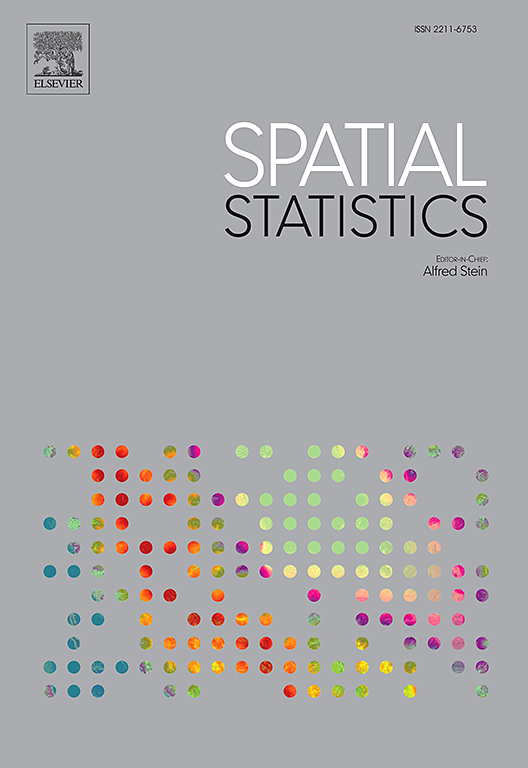Measuring unit relevance and stability in hierarchical spatio-temporal clustering
IF 2.5
2区 数学
Q3 GEOSCIENCES, MULTIDISCIPLINARY
引用次数: 0
Abstract
Understanding the significance of individual data points within clustering structures is critical to effective data analysis. Traditional stability methods, while valuable, often overlook the nuanced impact of individual units, particularly in spatial contexts. In this paper, we explore the concept of unit relevance in clustering analysis, emphasizing its importance in capturing the spatio-temporal nature of the clustering problem. We propose a simple measure of unit relevance, the Unit Relevance Index (URI), and define an overall measure of clustering stability based on the aggregation of computed URIs. Considering two experiments on real datasets with geo-referenced time series, we find that the use of spatial constraints in the clustering task yields more stable results. Therefore, the inclusion of the spatial dimension can be seen as a way to stabilize the clustering.
层次时空聚类中度量单元相关性和稳定性
理解聚类结构中单个数据点的重要性对于有效的数据分析至关重要。传统的稳定性方法虽然有价值,但往往忽略了单个单元的细微影响,特别是在空间环境中。在本文中,我们探讨了聚类分析中单位相关性的概念,强调了它在捕捉聚类问题的时空本质方面的重要性。我们提出了一种简单的单元相关性度量,即单元相关性索引(unit relevance Index, URI),并定义了基于计算的URI聚合的聚类稳定性的总体度量。通过对具有地理参考时间序列的真实数据集的两个实验,我们发现在聚类任务中使用空间约束可以获得更稳定的结果。因此,空间维度的包含可以看作是稳定聚类的一种方式。
本文章由计算机程序翻译,如有差异,请以英文原文为准。
求助全文
约1分钟内获得全文
求助全文
来源期刊

Spatial Statistics
GEOSCIENCES, MULTIDISCIPLINARY-MATHEMATICS, INTERDISCIPLINARY APPLICATIONS
CiteScore
4.00
自引率
21.70%
发文量
89
审稿时长
55 days
期刊介绍:
Spatial Statistics publishes articles on the theory and application of spatial and spatio-temporal statistics. It favours manuscripts that present theory generated by new applications, or in which new theory is applied to an important practical case. A purely theoretical study will only rarely be accepted. Pure case studies without methodological development are not acceptable for publication.
Spatial statistics concerns the quantitative analysis of spatial and spatio-temporal data, including their statistical dependencies, accuracy and uncertainties. Methodology for spatial statistics is typically found in probability theory, stochastic modelling and mathematical statistics as well as in information science. Spatial statistics is used in mapping, assessing spatial data quality, sampling design optimisation, modelling of dependence structures, and drawing of valid inference from a limited set of spatio-temporal data.
 求助内容:
求助内容: 应助结果提醒方式:
应助结果提醒方式:


